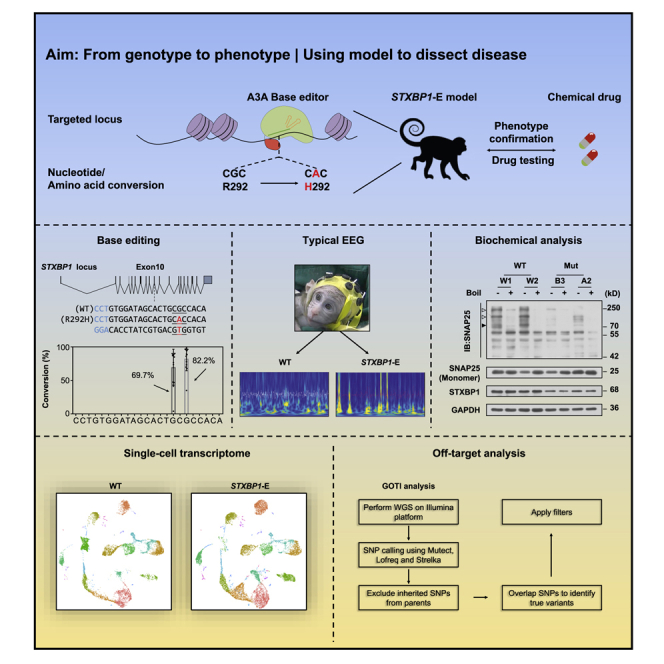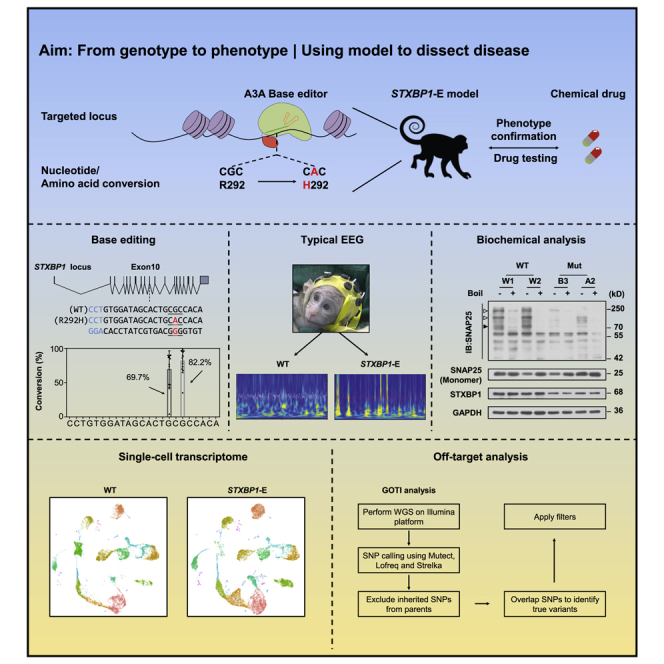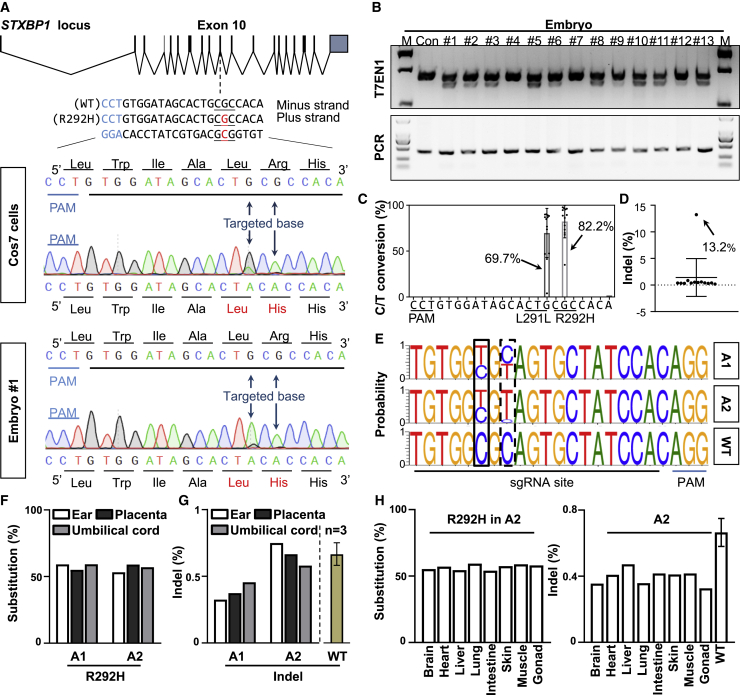Main Text
(Molecular Therapy, 30, 2163–2175; June 2022)
In the originally published version of this article, the authors made errors in the graphical abstract and Figure 1A. Both in the graphical abstract and Figure 1A, the substituted bases in plus and minus strand were incorrectly shown.
Additionally, the citation to Figure 4A in the sentence “Scalp EEG recordings from A1 during 3–4 months postpartum showed a typical suppression-burst pattern in addition to interictal epileptiform discharges (Figures 4A)” has been corrected to “Figure 2A.” The citation to Figure 4D in the sentence “Only one C-to-T substitution (chr8: 43865425) observed in B2 was identified as a sgRNA-dependent off-target (Figure 4D)” has been corrected to “Figure 4F.” These errors have been corrected online.
The authors regret these errors.
Figure 1.
A3A-mediated C-to-T substitutions at the STXBP1 locus in nonhuman primates (corrected)
Figure 1.
A3A-mediated C-to-T substitutions at the STXBP1 locus in nonhuman primates (original)

Graphical abstract (corrected)

Graphical abstract (original)
Contributor Information
Xingxu Huang, Email: huangxx@shanghaitech.edu.cn.
Zhen Liu, Email: zliu2010@ion.ac.cn.
Qiang Sun, Email: qsun@ion.ac.cn.




